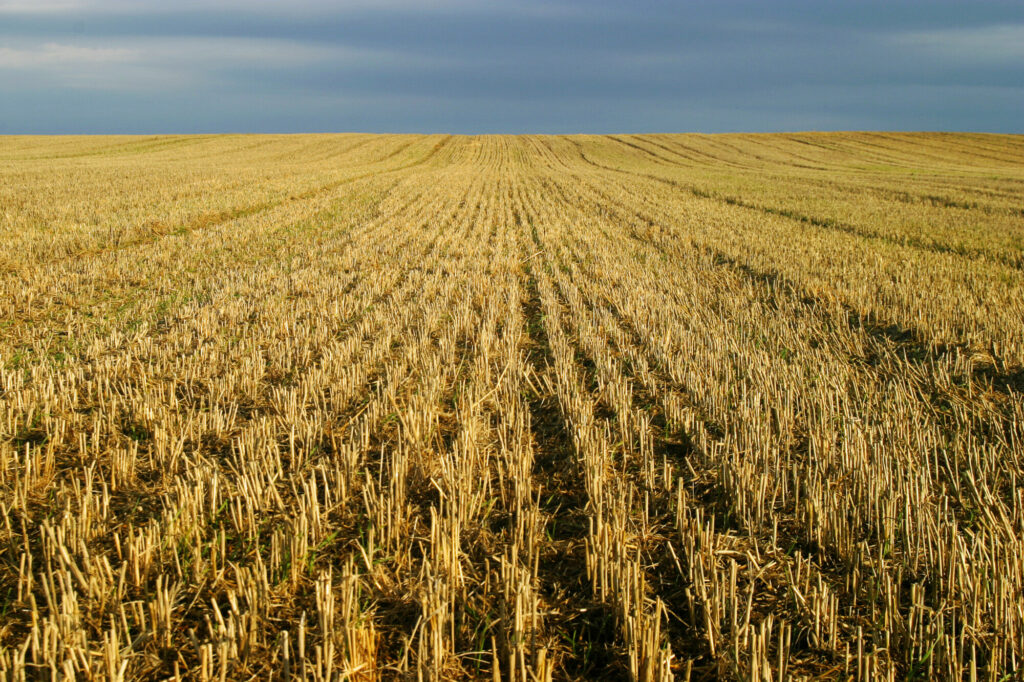Keep revised WRAG guidelines in mind when managing stubbles ahead of autumn drilling
13th September 2022
Farmers need to maximise efficacy and minimise resistance risks when using glyphosate to eliminate weeds ahead of drilling according to Matt Siggs of Bayer. Roundup (glyphosate) is a vital control tool on many farms, so a pro-active approach is best to ensure long-term efficacy.
Guidelines from the Weed Resistance Action Group (WRAG) underline the importance of integrating cultivation and chemistry to achieve the best overall results. “The basic guidance is for a maximum of two glyphosate applications after harvest and before drilling. If you have time to make two applications, use cultivation in between to eliminate any survivors.”
“Rates and application technique are important too, make sure the dose is sufficient for the hardest to kill weed in the field. And don’t go too fast and risk sub-optimal doses which could leave survivors requiring further treatment.”

Bayer’s Matt Siggs
Farmers using zero-till approaches need to be particularly careful around glyphosate applications as they don’t have cultivation available as a follow up method. But there are other ways they can bring diversity into the control programme according to Agrovista’s Chris Martin.
“Regen agriculture is a positive development but in the short term it might put more pressure on glyphosate. Many farmers are cultivating less, but cultivation is a good alternative to chemical weed control. Likewise cover crops generally need glyphosate for destruction. Diversity in cropping and establishment dates will help farmers get the benefits of regen-ag without over-reliance on glyphosate,” he says.
“Glyphosate is a fundamental tool for controlling ryegrass, black-grass and other weeds. If we lost it to resistance, it would put so much pressure on other parts of the system. We are very reliant on it, but I don’t think the some of the ways it’s used are very sustainable. For example, multiple stale seedbeds with fairly low rates are a problem.”
Here are some of the key risk factors to be aware of:
Population dynamics High weed populations tend to increase the risk of resistance development. Take action to drive down numbers to reduce the risk
Lack of diversity in control methods Reliance on few or only one method of control greatly increases the risk of resistance developing. This applies to chemical and cultural control methods, the more diversity across the cropping cycle, the better.
Repeat applications to survivors A small number of weeds often survive a herbicide application. In all likelihood, this is not due to resistance but because of application or field effects. In any case, take no chances, ensure survivors are controlled with another chemical mode of action or cultural method. Repeat applications of glyphosate to surviving weeds is a major resistance risk.
Low rates Insufficient application rate for the target weed and poor application timing means too many weeds survive the application. These surviving weeds are a potential resistance risk and an immediate problem for farmers aiming for clean, high-yielding crops.
Poor application technique Incorrect sprayer set up and operation can result in under or overdosing the product, affecting performance in the field. In the long term, this can contribute to resistance development. Examples of poor application technique include:
- Poorly maintained machinery which is not routinely calibrated and serviced
- Incorrect selection of nozzles for the job at hand and/or not replaced when worn out
- Operating at the wrong boom height and travelling too fast (+12km/hr)
Additionally physical losses from drift, run-off and bounce, and chemical losses due to pH, hard water and light degradation can all reduce the quantity of active reaching the target hence causing below par control.
Incorrect timing Adverse weather conditions and weed growth stage can both impair glyphosate performance. For example, poor downward translocation will occur during the stem extension phase of growth.

